Small indoor plants are the perfect way to add a touch of greenery to apartments, offices, or any cozy corner. These pint-sized plants are easy to care for, fit on shelves or desks, and bring life to small spaces. Whether you’re a beginner or a seasoned plant parent, this guide highlights the 15 best small indoor plants, focusing on their size, appearance, and specific care needs. Let’s dive into these compact beauties that thrive indoors!
Why Choose Small Indoor Plants?
Small indoor plants are ideal for anyone with limited space or a desire for low-maintenance greenery. They typically grow to under 12–18 inches tall, making them perfect for tabletops, windowsills, or small apartments. These plants not only purify the air but also add charm to your space without overwhelming it. Below, we’ve curated a list of the best small indoor plants, each accompanied by details on its appearance and care requirements.
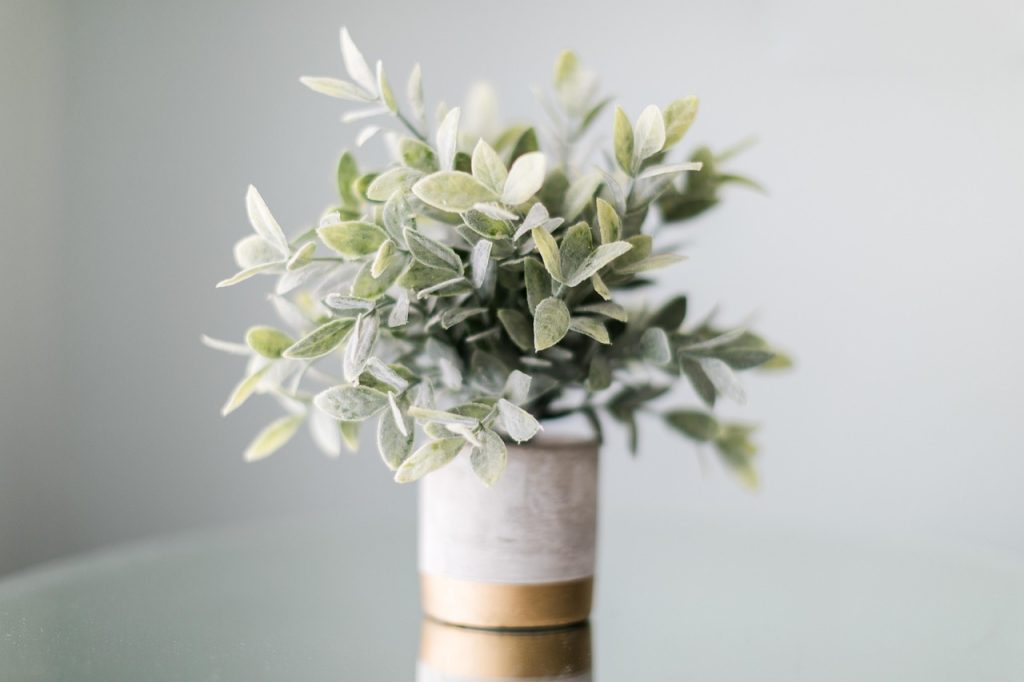
Top 15 Small Indoor Plants
1. Pothos (Epipremnum aureum)
- Size and Appearance: Pothos is a trailing plant with heart-shaped, variegated leaves in green, yellow, or white. It typically grows 6–12 inches tall in a pot, with vines extending up to 3 feet if left untrimmed.
- Care Tips:
- Light: Thrives in low to bright indirect light. Avoid direct sunlight to prevent leaf burn.
- Water: Water when the top inch of soil feels dry, roughly every 1–2 weeks.
- Maintenance: Trim vines to maintain size. Wipe leaves occasionally to remove dust.
2. Spider Plant (Chlorophytum comosum)
- Size and Appearance: This plant has long, arching green leaves with white stripes, growing 6–12 inches tall. It produces “pups” or baby plants that dangle from the mother plant.
- Care Tips:
- Light: Prefers bright, indirect light but tolerates low light.
- Water: Keep soil moist but not soggy with water every 1–2 weeks.
- Maintenance: Remove brown tips and propagate pups for new plants.
3. Peperomia (Peperomia spp.)
- Size and Appearance: Peperomias are compact, rarely exceeding 8–12 inches tall, with thick, glossy leaves in various shapes and colors, like green, red, or silver.
- Care Tips:
- Light: Medium to bright indirect light is ideal.
- Water: Allow soil to dry out between waterings, typically every 7–10 days.
- Maintenance: Low-maintenance plants avoid overwatering to prevent root rot.
4. Snake Plant (Sansevieria, Dracaena trifasciata)
- Size and Appearance: Compact varieties like ‘Hahnii’ stay under 12 inches tall with short, upright, sword-like leaves in green with gray or yellow variegation.
- Care Tips:
- Light: Tolerates low to bright indirect light.
- Water: Water sparingly, every 2–4 weeks, when soil is fully dry.
- Maintenance: Wipe leaves to keep them dust-free, highly drought-tolerant.
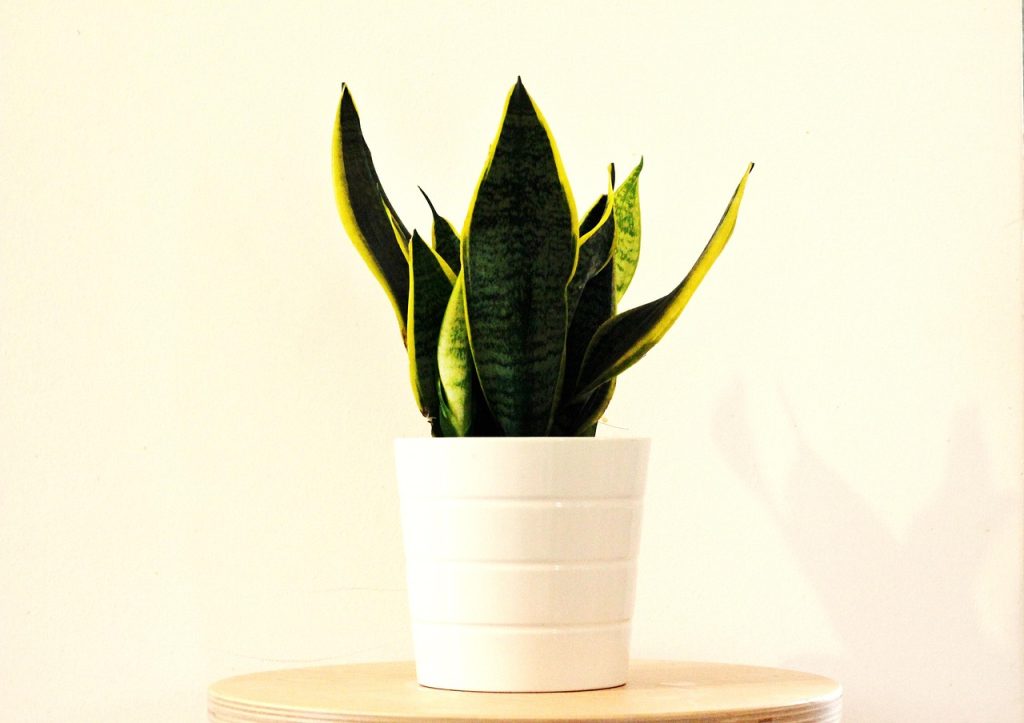
5. ZZ Plant (Zamioculcas zamiifolia)
- Size and Appearance: Grows 12–18 inches tall with glossy, dark green, feather-like leaves on upright stems.
- Care Tips:
- Light: Thrives in low to medium indirect light.
- Water: Water every 2–3 weeks when soil is dry. Overwatering causes yellowing.
- Maintenance: Extremely low-maintenance, perfect for beginners.
6. String of Pearls (Senecio rowleyanus)
- Size and Appearance: A trailing succulent with bead-like, pea-shaped leaves, growing 6–12 inches long when cascading from a pot.
- Care Tips:
- Light: Needs bright, indirect light too little light causes leggy growth.
- Water: Water soil when it is dry, about every 2 weeks.
- Maintenance: Use well-draining soil to propagate cuttings easily.
7. Baby Rubber Plant (Peperomia obtusifolia)
- Size and Appearance: Compact at 6–10 inches tall, with thick, glossy, rounded leaves in dark green.
- Care Tips:
- Light: Prefers medium to bright indirect light.
- Water: Water when the top inch of soil is dry, every 7–10 days.
- Maintenance: Avoid overwatering prune to maintain shape.
8. Chinese Money Plant (Pilea peperomioides)
- Size and Appearance: Grows 8–12 inches tall with round, pancake-shaped leaves on slender stems.
- Care Tips:
- Light: Bright, indirect light rotates regularly for even growth.
- Water: Water soil when it is dry, about every 1–2 weeks.
- Maintenance: Produces pups that can be separated for propagation.
9. Nerve Plant (Fittonia albivenis)
- Size and Appearance: Stays under 6 inches tall with vibrant green leaves and colorful veins (pink, white, or red).
- Care Tips:
- Light: Low to medium indirect light, direct sun fades colors.
- Water: Keep soil consistently moist but not waterlogged.
- Maintenance: Mist occasionally to maintain humidity.
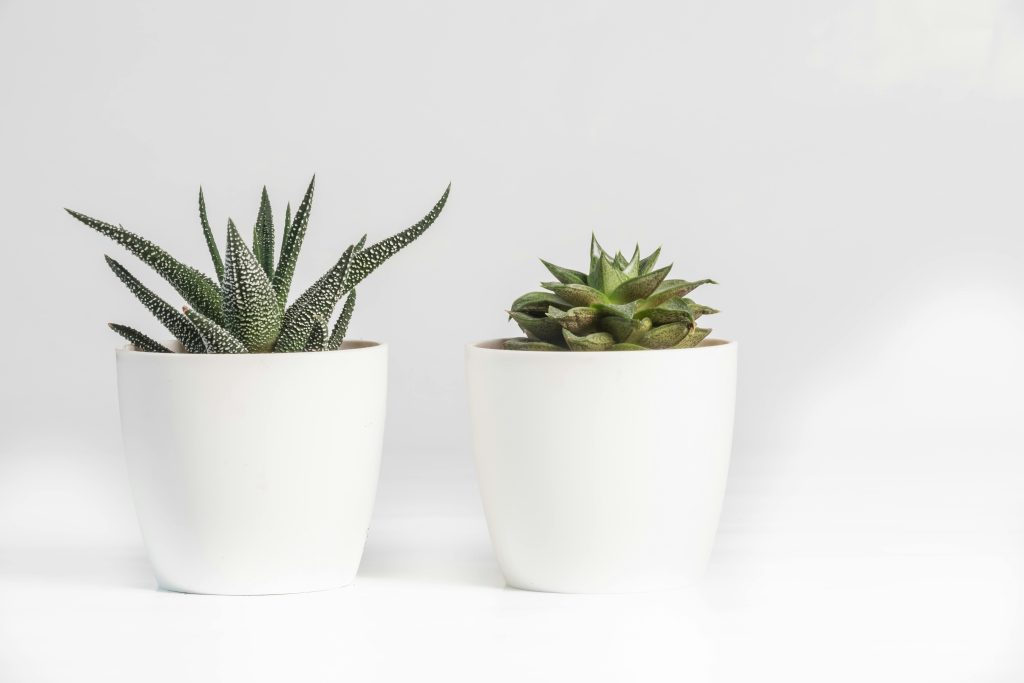
10. Haworthia (Haworthia spp.)
- Size and Appearance: A small succulent, 3–6 inches tall, with rosettes of thick, pointed leaves, often with white stripes or dots.
- Care Tips:
- Light: Bright, indirect light tolerates some direct sun.
- Water: Water every 2–3 weeks when soil is dry.
- Maintenance: Use well-draining soil avoid overwatering.
11. Polka Dot Plant (Hypoestes phyllostachya)
- Size and Appearance: Grows 6–12 inches tall with green leaves speckled with pink, white, or red spots.
- Care Tips:
- Light: Bright, indirect light to maintain vibrant colors.
- Water: Keep soil moist but not soggy, watering weekly.
- Maintenance: Pinch back to prevent legginess.
12. Echeveria (Echeveria spp.)
- Size and Appearance: Compact succulents, 3–6 inches tall, with rosettes of fleshy leaves in colors like green, blue, or pink.
- Care Tips:
- Light: Bright, indirect light or some direct sun.
- Water: Water every 2–3 weeks when soil is dry.
- Maintenance: Remove dead lower leaves use cactus soil mix.
13. Air Plant (Tillandsia spp.)
- Size and Appearance: Tiny, 2–6 inches tall, with spiky or curly leaves no soil needed.
- Care Tips:
- Light: Bright, indirect light.
- Water: Soak in water for 20–30 minutes every 1–2 weeks, then dry fully.
- Maintenance: Mist occasionally to ensure good air circulation.
14. Jade Plant (Crassula ovata)
- Size and Appearance: Mini varieties stay 6–12 inches tall with thick, oval-shaped leaves in green.
- Care Tips:
- Light: Bright, indirect light or some direct sun.
- Water: Water every 2–3 weeks when soil is dry.
- Maintenance: Prune to maintain size, use well-draining soil.
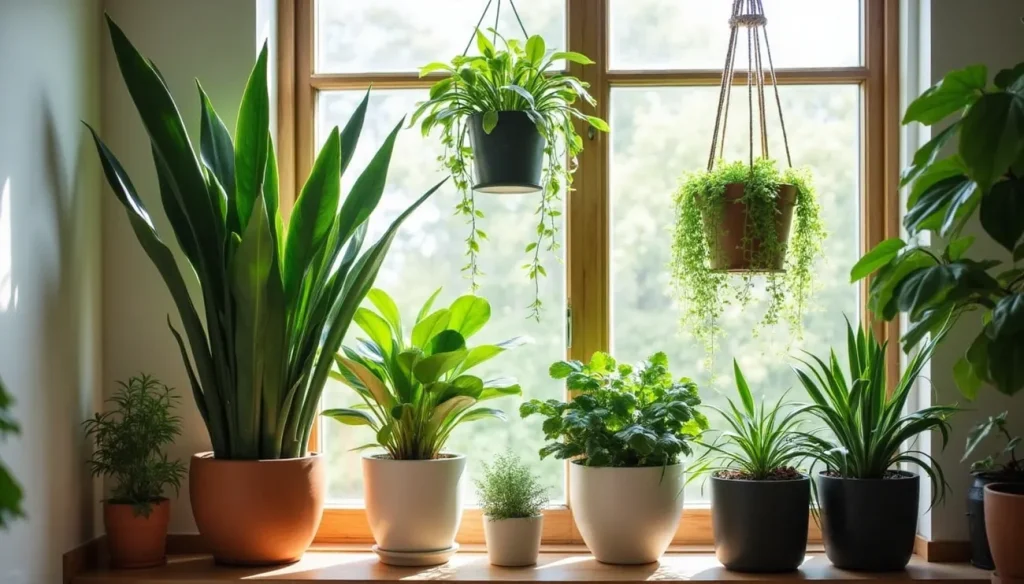
15. African Violet (Saintpaulia spp.)
- Size and Appearance: Grows 6–9 inches tall with fuzzy leaves and colorful blooms (purple, pink, or white).
- Care Tips:
- Light: Bright, indirect light avoid direct sun.
- Water: Water from the bottom when soil feels dry, every 1–2 weeks.
- Maintenance: Remove dead flowers to encourage blooming.
Read More: Indoor Plants Safe for Cats
Low Light vs. Bright Light Small Indoor Plants
Choosing the right plant depends on your space’s lighting. Here’s a quick comparison:
| Plant | Light Preference | Best For |
|---|---|---|
| Pothos | Low to bright indirect | Low-light apartments |
| Spider Plant | Low to bright indirect | Versatile spaces |
| Snake Plant | Low to bright indirect | Dark corners, beginners |
| ZZ Plant | Low to medium indirect | Low-light offices |
| Nerve Plant | Low to medium indirect | Humid bathrooms |
| Peperomia | Medium to bright indirect | Bright desks |
| String of Pearls | Bright indirect | Sunny windowsills |
| Chinese Money Plant | Bright indirect | Well-lit living rooms |
| Polka Dot Plant | Bright indirect | Colorful displays |
| Haworthia | Bright indirect | Sunny shelves |
| Echeveria | Bright indirect/direct | South-facing windows |
| Jade Plant | Bright indirect/direct | Sunny corners |
| Air Plant | Bright indirect | Creative displays |
| Baby Rubber Plant | Medium to bright indirect | Kitchen counters |
| African Violet | Bright indirect | Windowsills with filtered light |
Tips for Choosing Small Indoor Plants
- Assess Your Light: Check how much natural light your space gets. North-facing windows offer low light, while south-facing ones provide bright light.
- Consider Maintenance: If you’re busy, opt for low-maintenance plants like ZZ plants or snake plants.
- Match Your Aesthetic: Choose plants like polka dot plants for pops of color or air plants for a modern, soil-free look.
- Space Constraints: Trailing plants like string of pearls work well in hanging pots, while compact rosettes like echeveria fit on small shelves.
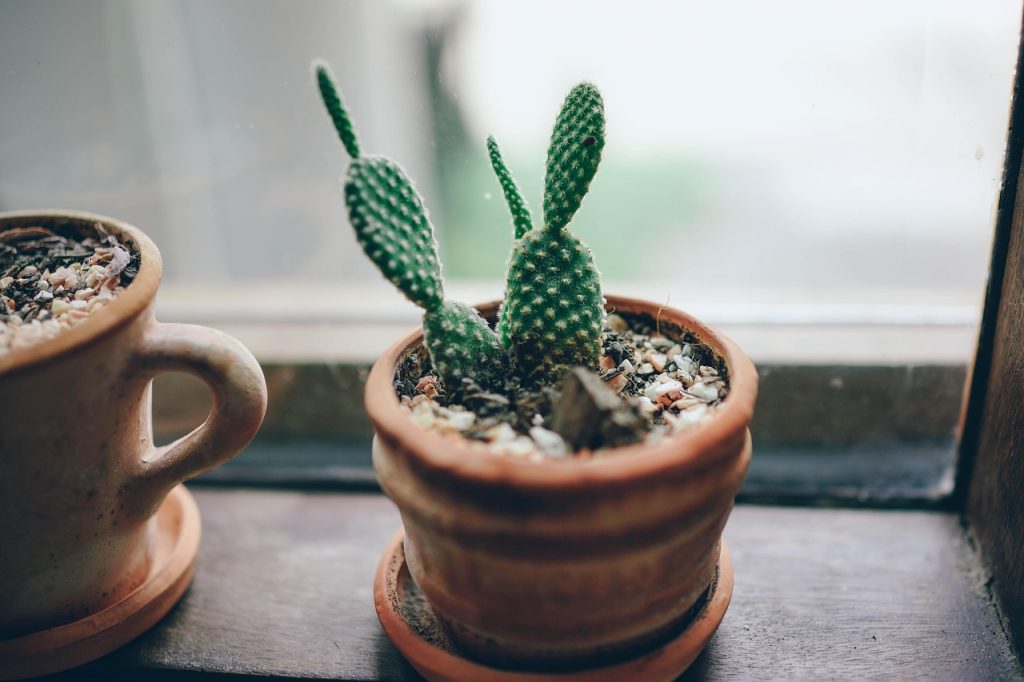
FAQ: Small Indoor Plants
The easiest small indoor plants for beginners are snake plants, ZZ plants, and pothos. These plants tolerate low light, require infrequent watering, and are forgiving if you miss a care step.
Yes! Pothos, snake plants, ZZ plants, spider plants, and nerve plants thrive in low to medium light, making them perfect for dimly lit spaces like offices or north-facing rooms.
Watering depends on the plant. Succulents like Haworthia and Echeveria need water every 2–3 weeks when soil is dry. Others, like nerve plants or African violets, prefer consistently moist soil and weekly watering.
Some small indoor plants, like spider plants and air plants, are pet-safe. However, plants like pothos and jade plants can be toxic to pets if ingested. Always check a plant’s toxicity before bringing it home.
To keep plants compact, prune regularly (e.g., trim pothos vines or pinch back polka dot plants). Use small pots to restrict root growth and avoid over-fertilizing, which can lead to leggy growth.
Conclusion
Small indoor plants are a fantastic way to bring nature into your home, no matter how limited your space. From the low-maintenance ZZ plant to the vibrant African violet, there’s a small indoor plant for every style and skill level. By matching your plant choice to your light conditions and care routine, you can enjoy lush greenery year-round. Start with one or two from this list, and watch your space transform!